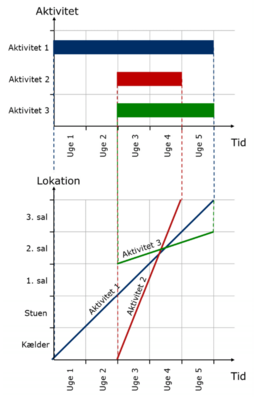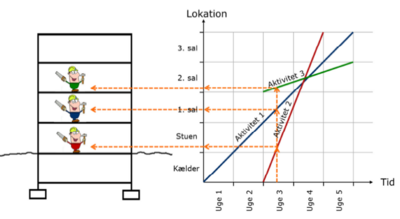Lean Approach to Scheduling in Construction Projects
(Created page with " == Abstract == Scheduling of activities are of utmost importance when starting a new project whatever scale it might be on. It is done to ensure the resources are used effici...") |
|||
| (161 intermediate revisions by one user not shown) | |||
| Line 1: | Line 1: | ||
| + | ==New title: Scheduling using Location Based Scheduling instead of CPM== | ||
| − | + | Scheduling of activities are of utmost importance when starting a new project whatever scale it might be on. It is done to ensure the resources are used efficiently and in most cost effective way<ref name="ssrg" />. According to PMI Body of Knowledge (2013) Project Time Management is a crucial part of a project managers scope. Managing a project typically include balancing the competing project constraints, such as quality, schedule, budget, and resources. | |
| − | Scheduling of activities are of utmost importance when starting a new project whatever scale it might be on. It is done to ensure the resources are used efficiently and in most cost effective way | + | The first process in Project Time Management, the Plan Schedule Management Process, may involve “''choosing strategic options to estimate and schedule the project such as: scheduling methodology, scheduling tools and techniques, estimating approaches, formats, and project management software''”<ref name="PMI" />. The output of this process is a Schedule Management Plan, which identifies a scheduling method and scheduling tool, and sets the format and establishes criteria for developing and controlling the project schedule. |
| + | |||
| + | There are various methods and techniques for scheduling of which the most widely used are [[The Critical Path Method (CPM)]]. CPM is primarily an activity based method that takes the activity as the unit of focus, and is often presented in a [[Gantt Chart]] and CPM network diagram<ref name="ssrg" />. However, criticism of the CPM has been raised, specifically in the case of construction projects, for not sufficiently supporting management during the construction phase, and not creating a continuous, and thus financial, flow of resources<ref name="lbs" /><ref name="imp" />. | ||
| + | |||
| + | |||
| + | The Location-based Scheduling (LBS) methodology is a Project Time Management tool, used by project managers in the construction industry. The scheduling method is designed to plan and manage workflows and may therefore be expected to be a useful alternative to CPM. It implies a shift in focus from primarily the activities to the flow of work through the various locations of the project. LBS is a scheduling method that rests upon the theories of line-of-balance and uses the graphic representation of a flowline chart or "Cyklogram" <ref name="lbs" />. In this article the representation will be referred to as a flowline chart. | ||
| + | With the application of LBS the project manager can achieve a better overview of the process, and gain several ways of optimizing a schedule that is scheduled with standard CPM-links. | ||
| + | |||
| + | ==Introduction== | ||
| + | |||
| + | The main focus of the article is to describe LBS, and the gains achieved by applying it instead of the alternative and traditional CPM. The article will consist of the following section: | ||
| + | * Firstly, the article provides an application-oriented description of the scheduling method LBS and its representation in a flowline chart. This part is divided into a theoretical section and an application section. The elements in which LBS and CPM differ, are particularly highlighted. | ||
| + | * Secondly, a discussion of the limitations of LBS is executed. | ||
| + | * Lastly, LBS is compared to CPM, including advantages and disadvantages of both methods. In continuation hereof, it is discussed whether it is favourable to apply the LBS and CPM together. | ||
| + | |||
| + | Since, it has not been possible to access all figures in English, table 1 provides a translation of the words used in the figures. | ||
| + | {| class="wikitable" | ||
| + | |+ Table 1 | ||
| + | |- | ||
| + | ! Danish | ||
| + | ! English | ||
| + | |- | ||
| + | | Projekt | ||
| + | | Project | ||
| + | |- | ||
| + | | Aktivitet (Akt) | ||
| + | | Activity (Act) | ||
| + | |- | ||
| + | | Lokation | ||
| + | | Location | ||
| + | |- | ||
| + | | Sal/Etage | ||
| + | | Floor | ||
| + | |- | ||
| + | | Tid | ||
| + | | Time | ||
| + | |- | ||
| + | | Uge | ||
| + | | Week | ||
| + | |- | ||
| + | | Dag(e) | ||
| + | | Day(s) | ||
| + | |} | ||
| + | |||
| + | ==About Location Based Scheduling (LBS)== | ||
| + | |||
| + | As construction work is generally characterized by continuous or repetitive work, where the same activities are executed at various locations of a building or construction, construction scheduling appears to be more closely aligned to repetitive scheduling methods such as “Line-of-balance”, “Time-location Matrix Model”, “Construction Planning Technique”, “Time Space Scheduling method”, “Flow-Line” and similar methods. Those alternative scheduling techniques, developed over the last 30 years, are also referred to by the generic term of “linear scheduling methods”, and have been proven to be well suited for projects of a repetitive nature. Since, the linear or repetitive scheduling methods strongly suggest locations or places the comprehensive term of “location-based scheduling” (LBS) was introduced by Russel Kenley<ref name="imp" />. The key influences of the introduction of LBS include Walter Mohr and Professor Kankainen. At University of Melbourne in 1980 Walther Mohr was teaching in flowline scheduling as the best method for scheduling in construction, and one of his students was Rusell Kenley. | ||
| + | Professor Kankainen was Professor at Helsinki University of Technology, and he understood that the CPM could not solve the problems he observed in the Finnish construction industry. One student working with Professor Kankainen was Olli Seppänen, who developed the software DynaProject - later known as VICO - which will be described later in this article<ref name="kenley" />. | ||
| + | |||
| + | Location Based Scheduling (LBS) has been known in the Danish construction industry since 1972 unde the name "Cycklogram". It is a scheduling method, that takes into account the location of the activities, i.e. where at the site of construction the production of the activities must be carried out. LBS also provides the opportunity to clarify the flow of production, i.e. how resources and activities are distributed across the different parts of the building<ref name="lbs" />. | ||
| + | |||
| + | ===Scheduling principle=== | ||
| + | |||
| + | LBS as a scheduling method has a lot in common with the traditional CPM. The common overall idea of the two methods are:<ref name="lbs" />. | ||
| + | * The schedule should ensure that the project's goals can be achieved within the time, resource and quality framework that apply to the project. | ||
| + | * The schedule serves as a map of the project showing the planned route from start to finish. | ||
| + | * The schedule serves as a time budget and provides the basis for analyzes and decisions regarding the choice of production methods, materials and equipment and other resources. | ||
| + | * The schedule serves as a communication tool that conveys the structure of the production process - what must be done at each particular time, what resources are to be used, and the order in which the work is to be performed. | ||
| + | * The schedule provides a basis for the follow-up of the realized progress of the project and thus also a basis for identifying possible deviations and their consequences. | ||
| + | |||
| + | The above requirements for the scheduling is independent of the scheduling method, but the way in which these requirements are achieved, is where LBS and CMP differ. Both methods are based on fundamental elements of scheduling such as activities, ressources and activity-links, and LBS also uses the time analysis (network analysis), which underlies the calculation of the critical path in the CPM method. But these typical CPM concepts lose their function in the LBS method, and instead new LBS concepts are introduced: location, location based activities, resource flow and scope zone - to name a few. | ||
| + | The principal difference between the traditional CPM method and LBS is that the CPM method is based on the activities and their logical connections to each other (an "activity based scheduling method"), while the LBS method is more based on the resources and their "flow" through the project (a "ressource oriented scheduling method"). By flow is meant how the activity of each activity flows through the different parts of a project. For a construction project, the different parts will be equal the different locations on the project. Thus, the geographical location is added as an additional dimension in the schedule. That is, the schedule representation not only tells ''when'', but also ''where'' an activity occurs<ref name="lbs" />. The schedule representation will be further elaborated in next section. | ||
| + | |||
| + | A study executed by Andersson N. and Christensen K. concludes, with emphasis from the site management involved, that the three most important implications of LBS are:<ref name="lbs" /> | ||
| + | # Improved schedule overview | ||
| + | # Establishment of work-flows | ||
| + | # Improved project control | ||
| + | |||
| + | ===Flowline chart=== | ||
| + | |||
| + | A time schedule made with the LBS method is called a flowline chart. Like in a Gantt chart, which typically is the graphical representation of the CMP method, time is represented on the horizontal axis. In the Gantt chart, the vertical axis represents activities. In a flowline chart, the vertical axis is divided into the locations of the project. The project's activities are instead represented by sloping lines that mark the intersection between time and place for the individual activity. Figure 1 illustrates how the same schedule can be visualized differently using the Gantt chart and flowline chart, respectively. | ||
| + | |||
| + | The duration of the activity is reflected by the slope of the line, and is estimated by the project manager in terms of man-hours needed to execute the task - although feasibility is achieved by basing durations on explicitly defined scope by using quantities and productivity rate assumptions<ref name="olli" />. | ||
| + | A rapid and short activity has a steep line, while a slow and time-consuming activity has a rather flat line. Figure 2 illustrates how the flowline chart is read off. It is seen that Activity 1 is executed on 1st floor in week 3, and have a duration of one week per floor with a total duration of five weeks. | ||
| + | |||
| + | <gallery widths=400px heights=400px> | ||
| + | File:flc.PNG|'''Figure 1''': Schedule represented in a Gantt chart (top) and flowline chart (bottom)<ref name="MTH" />. | ||
| + | File:flc2.PNG|'''Figure 2''': Reading of a flowline chart<ref name="MTH" />. | ||
| + | </gallery> | ||
| + | |||
| + | ===Identification of locations=== | ||
| + | |||
| + | [[File:lbs.JPG|thumb|170px|'''Figure 3''': Example of a hierarchic location structure<ref name="imp" />.]] | ||
| + | |||
| + | Identifying the locations of the project is a central element in the LBS method. Locations can be divided into different hierarchical levels, where the sum of the locations at a lower level corresponds to a location at a higher hierarchical level. An example is illustrated in figure 3. This hierarchical structure is called Location Breakdown Structure, and can be said to be the LBS method's counterpart to the CPM method's [[Work Breakdown Structure (WBS)]]. | ||
| + | |||
| + | The degree of detail of the locality structure is independent of how detailed the activities are defined, since it is the resources of the activities (i.e. material and human resources) that govern the location breakdown. The significance of the individual activity's material and human resources for the location breakdown can be expressed in three questions that illustrate the thinking and the considerations that are made when determining the location level for the individual activity:<ref name="lbs" /> | ||
| + | * What is the smallest location where the activity is repeated in the project? | ||
| + | * What is the smallest location on which the materials resources for the current activity can be distributed? | ||
| + | * Which one is the largest location, where there is only room for execution of the current activity, i.e. where there are no other activities at the same time? | ||
| + | |||
| + | ===Coupling of activities=== | ||
| + | |||
| + | The activity-links, known from the CPM method (see figure 4), are expanded in LBS to include the locations of the activities. The location based activity-links enables optimization of schedules, since activities now can be scheduled to overlap. The different opportunities for optimizing using activity-links are further elaborated in section "use LBS to optimize the time schedule". | ||
| + | |||
| + | There are five different levels of location-based activity-links, which are elaborated in table 2<ref name="lbs" />. | ||
| + | |||
| + | {| class="wikitable" | ||
| + | |+ Table 2 | ||
| + | |- | ||
| + | ! Activity-link | ||
| + | ! Description | ||
| + | ! Example | ||
| + | |- | ||
| + | | '''The four traditional activity links in CPM.''' | ||
| + | | AS-link indicates that activity A must be completed before activity B can begin. | ||
| + | |||
| + | AA-link indicates that activity B can not be completed before activity A is completed. | ||
| + | |||
| + | SS-link indicates that activity B can not be started before activity A has begun. | ||
| + | |||
| + | SA-link indicates that activity B must be terminated once activity A has started. | ||
| + | | [[File:cpm.PNG|thumb|500px|'''Figure 4''': The four traditional activity links in CPM<ref name="lbs" />.]] | ||
| + | |- | ||
| + | | '''Level 1: Activity-links between activities in the same location hierarchy.''' | ||
| + | | An activity-link on level 1 links activities which are in same location hierarchy. This implies that an Activity 1 should be completed at a location A1, before the subsequent Activity 2 can begin at the same location A1. | ||
| + | | [[File:link1.PNG|thumb|500px|'''Figure 5''': Example of activity-link level 1<ref name="lbs" />.]] | ||
| + | |- | ||
| + | | '''Level 2: Activity-links between activities in different location hierarchies.''' | ||
| + | | An activity-link on level 2 links activities which are in different location hierarchies. In the example in figure 6, an Activity 1 is assigned to location hierarchy "Building" and an Activity 2 is assigned to location hierarchy "Floor". This implies that Activity 1 should be completed in the location hierarchy "Building", before the subsequent Activity 2 can begin in the location hierarchy "Floor". | ||
| + | | [[File:link2.PNG|thumb|500px|'''Figure 6''': Example of activity-link level 2<ref name="lbs" />.]] | ||
| + | |- | ||
| + | | '''Level 3: Internal activity-links.''' | ||
| + | | An activity-link on level 3 determines the internal location sequence of an activity, i.e. the sequence of locations at which the activity is conducted/executed. That is, an internal activity-link is the same as the location affiliation of an activity. In the example in figure 5 Activity 1 and Activity 2 have internal activity-links that imply that the activities starts at Building A, first on floor A1, then A2 and A3, before continuing in Building B, first on floor B1, then B2 and B3. | ||
| + | | | ||
| + | |- | ||
| + | | '''Level 4: Activity-links between two activities that creates a location slack.''' | ||
| + | | An activity-link on level 4 is applied to create a location slack between two activities at different locations, i.e. a gap between the two locations. In the example in figure 7, a slack of one floor between "Vinduesmontage" and "Gulv- og vægelementmontage", implies that "Vinduesmontage" on 1st floor at the earliest can begin when "Gulv- og vægelementmontage" is completed on the 2nd floor. | ||
| + | | [[File:link4.PNG|thumb|500px|'''Figure 7''': The four traditional activity links in CPM<ref name="lbs" />.]] | ||
| + | |- | ||
| + | | '''Level 5: Activity-links between two locations.''' | ||
| + | | An activity-link on Level 5 enables links between two activities at two different locations, regardless of the location level. | ||
| + | | | ||
| + | |} | ||
| + | |||
| + | The use of location based activity-links enables that the project can be planned in a way that reduces the duration of the project without increasing resource consumption. The following section will provide guidance on ''how'' to use it to reach this potential of LBS. | ||
| + | |||
| + | ==Application== | ||
| + | |||
| + | With the application of LBS the project manager can achieve a better overview of the process, including tact time, activity sequence and locations. Therefore, the application of LBS will make it easy spotting collisions on the site and areas with inefficient use of resources. | ||
| + | Figure 8 is an example of how the application of LBS makes it easy to spot a collision of three activities on 2nd floor in week 4, missing work on 1st, 2nd and 3rd floor in week 1 and 2, and missing work in the basement, ground floor and 1st floor in week 4 and 5<ref name="MTH" />. In the following section it is described how to apply LBS in order to optimize the schedule. | ||
| + | |||
| + | [[File:flc3.PNG|thumb|center|500px|'''Figure 8''': Reading of a collision (red circle) and missing work (blue circles) in a flowline chart<ref name="MTH" />.]] | ||
| + | |||
| + | ===Use LBS to optimize the time schedule=== | ||
| + | |||
| + | There are several ways of optimizing a time schedule with the use of LBS, and in particular its location based activity-links. Table 3 provides some examples of ways of optimizing a time schedule that is scheduled with standard CPM-links<ref name="MTH" /><ref name="lbs" />. | ||
| + | |||
| + | {| class="wikitable" | ||
| + | |+ Table 3 | ||
| + | |- | ||
| + | ! Way of optimizing | ||
| + | ! Description | ||
| + | ! Example | ||
| + | |- | ||
| + | | '''1. Use the visualized flow and work spaces to avoid collisions''' | ||
| + | | Figure 9 illustrates four examples of how a better overview of the activities in the time schedule illustrated in figure 8 can lead to an optimized time schedule without collisions. | ||
| + | | [[File:flc5.PNG|thumb|600px|'''Figure 9''': LBS schedule without collisions<ref name="MTH" />.]] | ||
| + | |- | ||
| + | | '''2. Add location overlap''' | ||
| + | | Figure 11 illustrates the same time schedule as in figure 10, but with the use of location overlap. This implies that a subsequent activity can start before a preceding activity is completed, hence the project duration is reduced from 20 days to 14 days. | ||
| + | | [[File:flc4.PNG|thumb|600px|'''Figure 10''': LBS schedule without location overlap. Duration: 20 days<ref name="lbs" />.]] | ||
| + | [[File:flc6.PNG|thumb|600px|'''Figure 11''': LBS schedule with location overlap. Duration: 14 days <ref name="lbs" />.]] | ||
| + | |- | ||
| + | | '''3. Ensure synchronization of activities''' | ||
| + | | Synchronizing the activities in the project implies that the production speed of the activities is balanced against each other. In some cases it may be desirable to increase the amount of resources allocated to an activity to achieve a shorter project duration, while in another cases it may be better to reduce resource allocation in an activity. Figure 13 shows an example where the activities from figure 12 have been synchronized. Note that the total project duration of 20 days is the same in both cases. | ||
| + | | [[File:flc11.PNG|thumb|600px|'''Figure 12''': LBS schedule without synchronization. Duration: 20 days<ref name="lbs" />.]] | ||
| + | [[File:flc7.PNG|thumb|600px|'''Figure 13''': LBS schedule with synchronization. Duration: 20 days<ref name="lbs" />.]] | ||
| + | |- | ||
| + | | '''4. Ensure continuity of activities''' | ||
| + | | It is important to ensure continuity of activities, which directly contributes to creating a steady flow of production for the individual activity. That an activity is continuous means that the entire activity is carried out in all relevant sites without interruption. Figure 14 and Figure 15 illustrate scheduling of a discontinuous and a continuous activity respectively. The examples show that it does not pay to start activity 2 as early as possible, since the total duration of the project is the same in both cases. In addition, there is a major practical disadvantage associated with the work in the discontinuous activity to be initiated and interrupted three times, which negatively impacts the productivity. | ||
| + | | [[File:flc9.PNG|thumb|600px|'''Figure 14''': LBS schedule without continuity. Duration: 20 days<ref name="lbs" />.]] | ||
| + | [[File:flc10.PNG|thumb|600px|'''Figure 15''': LBS schedule with continuity. Duration: 20 days<ref name="lbs" />.]] | ||
| + | |- | ||
| + | | '''5. Add scope zone''' | ||
| + | | A scope zone (in Danish "Råderumszone") can be seen as the horizontal and vertical empty spaces between two dependent activities. It is not part of the task duration, but it is located between two activities to give time to react to deviations, and in this way function as a buffer. Scope zones are applied in order to increase the robustness of the schedule. The goal is to protect the continuous flow of an activity, instead of just protecting the critical path. Because the production rates of predecessors and successors are aligned, most tasks are on the critical path<ref name="olli" />. | ||
| + | | [[File:sz.PNG|thumb|600px|'''Figure 16''': Scope zone between "Tømrer" (carpenter) and "Maler" (painter)<ref name="MTH" />.]] | ||
| + | |} | ||
| + | |||
| + | ===LBS Software=== | ||
| + | |||
| + | The most common LBS software in Denmark is VICO (Schedule Planner). VICO is a software specifically designed to develop a location based schedule. A new project in VICO begins by making a location hierarchy, in which the project is divided into an appropriate number of levels and locations. Then VICO automatically creates a Flow line chart. Subsequently, the activities can be encoded with names and durations, and the mutual links can be scheduled. In this phase VICO has several different views of the project which make the scheduling easier. (VICO has the ability to calculate activity durations from a selection of the bill-of-quantity allocated to a specific activity together with the resources that are allocated and information on productivity for the specific type of work.) Once the activities are encoded and the mutual links have been created, an overview of the workflow of the construction project is generated. Any conflicts between activities can be solved, and human resources can be adjusted to achieve optimal workflow through the project<ref name="thesis" />. | ||
| + | |||
| + | The advantages of LBS method can be further increased when it is combined with BIM (Building Information Modelling). 4D cad software | ||
| + | |||
| + | BIM is used both to extract information needed to develop an accurate WBS and to more efficiently create schedules based on LBS. | ||
| + | |||
| + | https://ac.els-cdn.com/S0926580506000161/1-s2.0-S0926580506000161-main.pdf?_tid=spdf-8f7da5be-c46a-452d-a3b5-61aa45d8dd72&acdnat=1519384282_32f13bf0823e9e1942a4a4b6f8e8675b | ||
| + | |||
| + | https://ac.els-cdn.com/S0926580510001391/1-s2.0-S0926580510001391-main.pdf?_tid=spdf-af6d3ab6-329e-4d51-8493-c36cf49e959e&acdnat=1519384302_fd97e6bd797ec656d06387596c24bc1c | ||
| + | |||
| + | |||
| + | ===Use LBS as a Lean Construction tool=== | ||
| + | |||
| + | Since 1972, LBS has been forgotten for many years, which has required a relaunch. It has to some extent been conducted by International Group for Lean Construction (IGLC), why the method is often associated with [[Lean construction]]. In relation to the ideas behind Lean Construction LBS is interesting because of its high focus on creating a flow in the process by making activities synchronized and continual. LBS supplements the Lean planning method Last Planner System (LPS), in which the level of detail of the schedule increases with the proximity to the date - a so-called rolling-wave planning<ref name="trimmet" /> <ref name="maylor" />. Refer to [[Last Planner System as a project management tool]] for further information about LPS. LBS and LPS work basically with different bias. LPS schedules with a short time horizon based on a theory that the construction process is too complex to plan with a long time horizon. Conversely, LBS works with scheduling of the entire project, even before starting. But the methods offer different benefits, and one can easily gain from both by using them supplementary. LBS does not replace the social planning and coordination that takes place between the formen in LPS, but the method can be a good tool at a more general level in which the processes are organized. At the same time LBS, with the intuitive graphical representation of the schedule, can help to highlight problems in the process to subcontractors and craftsmen in the field. Hereby, the schedule can provide a basis for a dialogue on optimization of the process or a redistribution of resources<ref name="trimmet" />. | ||
| + | |||
| + | ==Limitations== | ||
| + | |||
| + | Although LBS has a long history and is well-founded theoretically, the method in general has not had much interest in the construction industry. In addition to the results available in the form of theoretical research, there is still limited knowledge about the application of the LBS method in practice<ref name="lbs" />. An underlying presumption is that LBS mainly is a tool for highly repetitive work (e.g. multi-storey buildings or road constructions) and, consequently, is not suitable for non-repetitive work. The theoretical work provides a solid foundation to the LBS-method, but it does not reveal whether LBS meets the demands of planning, scheduling and controlling on site and in different kinds of projects<ref name="imp" />. | ||
| + | |||
| + | The LBS method is not hard to use, but it is difficult to handle by hand, and it is therefore necessary to have a good software program that can handle LBS. A possible explanation of the limited extent of the method may therefore be that there has been no user-friendly IT-based planning tool for the LBS method. Even though, LBS software such as Control™ and VICO has now become unsettled and has been introduced to the 2003 international market<ref name="lbs" />, it requires a significant amount of input information in the initial stage og the planning process. This is a consequence of the design of the LBS software, which uses a bill-of-quantity as the starting point for definition of activities - although it is not a specific requirement for neither LBS in general nor the specific LBS software to use bill-of-quantity. Since, project managers in a Danish context do not have access to a coherent bill-of-quantity for their respective projects, activity durations have to be valued on basis of the project managers' individual experience rather than extracted from bill-of-quantities, documented productivity data or specified numbers of resource units. | ||
| + | |||
| + | LBS implies a new, or preferably unfamiliar, scheduling method which requires a new approach to scheduling and it involves new conceptions. One aspect is about finding a sufficient level of details required for the planning, scheduling and control of the project. It is possible, but very inconvenient, to change the level of detail once the scheduling has commenced. Another difficulty is the definition of different kinds of locations, e.g. how to handle ground works in relation to the locations that are connected to the actual building. Furthermore, well-known concepts of the CPM, such as critical chain and float fail, become irrelevant as LBS principally concerns the management of workflows where resource constraints become a central aspect<ref name="imp" />. | ||
| + | |||
| + | ==Should LBS be used instead of CPM?== | ||
| + | |||
| + | A study executed by Haritha Mahalakshmi, K. et. al. (2017) aimed at comparing CPM and LBS by scheduling the same project using CANDY platform and VICO Schedule Planner respectively. It was found that LBS provided a project with lesser duration that the CPM schedule, as the activities in LBS were grouped location-wise and the activities could be started and advanced concurrently. Hence, there was no need to dedicate resources to different locations separately. In addition both schedules were analyzed using Analytical Hierarchical Process, in which the lesser the value of consistency the better the schedule. It was found that the consistency ratio for LBS was far lesser than the consistency ratio for CPM schedule, hence the study concluded that scheduling using LBS is more efficient than the CPM schedule<ref name="ssrg" />. | ||
| + | |||
| + | If the project manager is skilled in using LBS software, it is often possible to switch between views such as Gantt chart, CPM network diagram and LBS, thus gaining the strengths of each of the methods<ref name="trimmet" />. | ||
| + | |||
| + | Table 4 lists advantages and disadvantages of LBS and CPM respectively - and in the case of LBS the table is also seen as a summary of this article<ref name="maylor" />. | ||
| + | |||
| + | {| class="wikitable" | ||
| + | |+ Table 4 | ||
| + | ! | ||
| + | ! LBS | ||
| + | ! CPM | ||
| + | |- | ||
| + | ! Good points | ||
| + | | | ||
| + | * Improved schedule overview | ||
| + | * Establishment of work-flows | ||
| + | * Improved project control | ||
| + | * Helps optimizing resource allocation | ||
| + | || | ||
| + | * Simple to draw and read | ||
| + | * Good for static environments | ||
| + | * Useful for providing overview of projects activities | ||
| + | * Very widely used | ||
| + | * The basis of the graphical interface for most project planning software | ||
| + | |- | ||
| + | ! Limitations | ||
| + | | | ||
| + | * Limited knowledge about the application of the LBS method in practice | ||
| + | * New approach to scheduling | ||
| + | * Difficult to find a sufficient level of details in the initial phase | ||
| + | * Well-known concepts of the CPM become irrelevant | ||
| + | | | ||
| + | * Difficult to update manually where there are many changes - charts can quitly become obsolete and therefore discredited | ||
| + | * Does not equate time with cost | ||
| + | * Does not help in optimising resource allocation | ||
| + | * Can lead to false sense of certainty about the project | ||
| + | |} | ||
| + | |||
| + | ==Annotated bibliography== | ||
| + | |||
| + | Harithamahalakshmi, K. et al., 2017. Construction Scheduling Using Critical Path Method And Location Based Management System. ''SSRG International Journal of Civil Engineering''. Available at: www.internationaljournalssrg.org | ||
| + | * Journal that devises an optimal technique of scheduling between CPM and Location Based Management System (LBMS). | ||
| + | |||
| + | |||
| + | Project Management Institute., 2013. ''A guide to the project management body of knowledge (PMBOK® guide)''. 5th ed., Available at: http://proquestcombo.safaribooksonline.com.proxy.findit.dtu.dk/book/software-engineering-and-development/project-management/9781935589679/firstchapter | ||
| + | * The PMBOK® Guide is the preeminent global standard for project management. It provides project managers with the guidelines, rules and characteristics needed to achieve organizational excellence. | ||
| + | |||
| + | |||
| + | Andersson, N. & Christensen, K., Practical Implications Of Location-Based Scheduling. ''Department of Civil Engineering, Technical University of Denmark, DK-2800, Kgs. Lyngby, Denmark.'' Available at: http://cdn2.hubspot.net/hub/658/whitepapers/practical_implications_of_location-based_scheduling.pdf [Accessed February 12, 2018] | ||
| + | * This study rests upon three case studies, in which the purpose is to test and evaluate the practical implications of LBS when applied on site. The study concludes that improved schedule overview, establishment of workflows and improved project control constitute the three most important implications of LBS. | ||
| + | |||
| + | |||
| + | Andersson, N. & Christensen, K., 2007. ''Location-based Scheduling. Vurdering af LBS-metodens anvendelse i byggeprojekter'' | ||
| + | * This report deals with Location-based Scheduling. The report is the result of a cooperation project between BYG * DTU and the construction companies Pihl & Søn, MT Højgaard and NCC. The report is based on current literature in the field, but it is also rooted in empirical studies that have been completed in three parallel graduation projects. | ||
| + | |||
| + | |||
| + | Kenley, R. & Seppänen, O., 2010. ''Location-Based Management for Construction: Planning, Scheduling and Control'' 1st ed., London and New York: Spon Press. | ||
| + | * With extensive case studies for illustration, this is a practitioner's guide to an entirely new production system for construction management using flowline scheduling. Covering the entire process of presenting a comprehensive management system – from design, through measurement, scheduling, and visualization and control – its emphasis is on reducing cost and increasing quality. Drawing its components together into a management system, the authors not only include theory and explanations of how and why it works, but also examine and present a suite of methods for successful project implementation. | ||
| + | |||
| + | |||
| + | Seppänen, O., 2009. ''Empirical research on the success of production control in building construction projects.'' Helsinki University of Tehnology. | ||
| + | * The main goal of this thesis is to examine empirically how production is currently controlled and to establish the root causes for failure to implement schedules as they are planned. The second goal of the research is to improve the location-based management system and its processes. The research contributed an improved forecast and alarm system and proposed a systematic process for their use in construction. | ||
| + | |||
| + | ==References== | ||
| + | |||
| + | <references> | ||
| + | <ref name="ssrg">Harithamahalakshmi, K. et al., 2017. Construction Scheduling Using Critical Path Method And Location Based Management System. ''SSRG International Journal of Civil Engineering''. Available at: www.internationaljournalssrg.org [Accessed February 8, 2018].</ref> | ||
| + | |||
| + | |||
| + | <ref name="PMI">Project Management Institute., 2013. ''A guide to the project management body of knowledge (PMBOK® guide)''. 5th ed., Available at: http://proquestcombo.safaribooksonline.com.proxy.findit.dtu.dk/book/software-engineering-and-development/project-management/9781935589679/firstchapter [Accessed February 8, 2018]</ref> | ||
| + | |||
| + | |||
| + | <ref name="trimmet">Bertelsen, S., 2012. ''Håndbog i Trimmet Byggeri - Lean Construction'' 3rd ed., Foreningen Lean Construction-DK og Sven Bertelsen. Available at: http://www.leanconstruction.dk/media/8947/H%C3%A5ndbog%20v%202.1.pdf</ref> | ||
| + | |||
| + | |||
| + | <ref name="imp">Andersson, N. & Christensen, K., Practical Implications Of Location-Based Scheduling. ''Department of Civil Engineering, Technical University of Denmark, DK-2800, Kgs. Lyngby, Denmark.'' Available at: http://cdn2.hubspot.net/hub/658/whitepapers/practical_implications_of_location-based_scheduling.pdf [Accessed February 12, 2018].</ref> | ||
| + | |||
| + | |||
| + | <ref name="lbs">Andersson, N. & Christensen, K., 2007. ''Location-based Scheduling. Vurdering af LBS-metodens anvendelse i byggeprojekter''</ref> | ||
| + | |||
| + | |||
| + | <ref name="MTH">MT Højgaard A/S, 2015. ''Hvad er lokationsbaseret planlægning ?''</ref> | ||
| + | |||
| + | |||
| + | <ref name="thesis">Christensen, C.J. et al., 2015. ''Lokationsbaseret Planlægning til Optimering af Tidsplaner.'' Technical University of Denmark, DK-2800, Kgs. Lyngby, DenmarK.</ref> | ||
| + | |||
| + | |||
| + | <ref name="kenley">Kenley, R. & Seppänen, O., 2010. ''Location-Based Management for Construction: Planning, Scheduling and Control'' 1st ed., London and New York: Spon Press.</ref> | ||
| + | |||
| + | |||
| + | <ref name="olli">Seppänen, O., 2009. ''Empirical research on the success of production control in building construction projects.'' Helsinki University of Tehnology.</ref> | ||
| + | |||
| + | <ref name="maylor">Maylor, H., 2010. ''Project Management'' 4th ed., Harlow: Prentice Hall.</ref> | ||
| + | |||
| + | |||
| + | <references /> | ||
Latest revision as of 08:38, 26 February 2018
Contents |
[edit] New title: Scheduling using Location Based Scheduling instead of CPM
Scheduling of activities are of utmost importance when starting a new project whatever scale it might be on. It is done to ensure the resources are used efficiently and in most cost effective way[1]. According to PMI Body of Knowledge (2013) Project Time Management is a crucial part of a project managers scope. Managing a project typically include balancing the competing project constraints, such as quality, schedule, budget, and resources. The first process in Project Time Management, the Plan Schedule Management Process, may involve “choosing strategic options to estimate and schedule the project such as: scheduling methodology, scheduling tools and techniques, estimating approaches, formats, and project management software”[2]. The output of this process is a Schedule Management Plan, which identifies a scheduling method and scheduling tool, and sets the format and establishes criteria for developing and controlling the project schedule.
There are various methods and techniques for scheduling of which the most widely used are The Critical Path Method (CPM). CPM is primarily an activity based method that takes the activity as the unit of focus, and is often presented in a Gantt Chart and CPM network diagram[1]. However, criticism of the CPM has been raised, specifically in the case of construction projects, for not sufficiently supporting management during the construction phase, and not creating a continuous, and thus financial, flow of resources[3][4].
The Location-based Scheduling (LBS) methodology is a Project Time Management tool, used by project managers in the construction industry. The scheduling method is designed to plan and manage workflows and may therefore be expected to be a useful alternative to CPM. It implies a shift in focus from primarily the activities to the flow of work through the various locations of the project. LBS is a scheduling method that rests upon the theories of line-of-balance and uses the graphic representation of a flowline chart or "Cyklogram" [3]. In this article the representation will be referred to as a flowline chart.
With the application of LBS the project manager can achieve a better overview of the process, and gain several ways of optimizing a schedule that is scheduled with standard CPM-links.
[edit] Introduction
The main focus of the article is to describe LBS, and the gains achieved by applying it instead of the alternative and traditional CPM. The article will consist of the following section:
- Firstly, the article provides an application-oriented description of the scheduling method LBS and its representation in a flowline chart. This part is divided into a theoretical section and an application section. The elements in which LBS and CPM differ, are particularly highlighted.
- Secondly, a discussion of the limitations of LBS is executed.
- Lastly, LBS is compared to CPM, including advantages and disadvantages of both methods. In continuation hereof, it is discussed whether it is favourable to apply the LBS and CPM together.
Since, it has not been possible to access all figures in English, table 1 provides a translation of the words used in the figures.
| Danish | English |
|---|---|
| Projekt | Project |
| Aktivitet (Akt) | Activity (Act) |
| Lokation | Location |
| Sal/Etage | Floor |
| Tid | Time |
| Uge | Week |
| Dag(e) | Day(s) |
[edit] About Location Based Scheduling (LBS)
As construction work is generally characterized by continuous or repetitive work, where the same activities are executed at various locations of a building or construction, construction scheduling appears to be more closely aligned to repetitive scheduling methods such as “Line-of-balance”, “Time-location Matrix Model”, “Construction Planning Technique”, “Time Space Scheduling method”, “Flow-Line” and similar methods. Those alternative scheduling techniques, developed over the last 30 years, are also referred to by the generic term of “linear scheduling methods”, and have been proven to be well suited for projects of a repetitive nature. Since, the linear or repetitive scheduling methods strongly suggest locations or places the comprehensive term of “location-based scheduling” (LBS) was introduced by Russel Kenley[4]. The key influences of the introduction of LBS include Walter Mohr and Professor Kankainen. At University of Melbourne in 1980 Walther Mohr was teaching in flowline scheduling as the best method for scheduling in construction, and one of his students was Rusell Kenley. Professor Kankainen was Professor at Helsinki University of Technology, and he understood that the CPM could not solve the problems he observed in the Finnish construction industry. One student working with Professor Kankainen was Olli Seppänen, who developed the software DynaProject - later known as VICO - which will be described later in this article[5].
Location Based Scheduling (LBS) has been known in the Danish construction industry since 1972 unde the name "Cycklogram". It is a scheduling method, that takes into account the location of the activities, i.e. where at the site of construction the production of the activities must be carried out. LBS also provides the opportunity to clarify the flow of production, i.e. how resources and activities are distributed across the different parts of the building[3].
[edit] Scheduling principle
LBS as a scheduling method has a lot in common with the traditional CPM. The common overall idea of the two methods are:[3].
- The schedule should ensure that the project's goals can be achieved within the time, resource and quality framework that apply to the project.
- The schedule serves as a map of the project showing the planned route from start to finish.
- The schedule serves as a time budget and provides the basis for analyzes and decisions regarding the choice of production methods, materials and equipment and other resources.
- The schedule serves as a communication tool that conveys the structure of the production process - what must be done at each particular time, what resources are to be used, and the order in which the work is to be performed.
- The schedule provides a basis for the follow-up of the realized progress of the project and thus also a basis for identifying possible deviations and their consequences.
The above requirements for the scheduling is independent of the scheduling method, but the way in which these requirements are achieved, is where LBS and CMP differ. Both methods are based on fundamental elements of scheduling such as activities, ressources and activity-links, and LBS also uses the time analysis (network analysis), which underlies the calculation of the critical path in the CPM method. But these typical CPM concepts lose their function in the LBS method, and instead new LBS concepts are introduced: location, location based activities, resource flow and scope zone - to name a few. The principal difference between the traditional CPM method and LBS is that the CPM method is based on the activities and their logical connections to each other (an "activity based scheduling method"), while the LBS method is more based on the resources and their "flow" through the project (a "ressource oriented scheduling method"). By flow is meant how the activity of each activity flows through the different parts of a project. For a construction project, the different parts will be equal the different locations on the project. Thus, the geographical location is added as an additional dimension in the schedule. That is, the schedule representation not only tells when, but also where an activity occurs[3]. The schedule representation will be further elaborated in next section.
A study executed by Andersson N. and Christensen K. concludes, with emphasis from the site management involved, that the three most important implications of LBS are:[3]
- Improved schedule overview
- Establishment of work-flows
- Improved project control
[edit] Flowline chart
A time schedule made with the LBS method is called a flowline chart. Like in a Gantt chart, which typically is the graphical representation of the CMP method, time is represented on the horizontal axis. In the Gantt chart, the vertical axis represents activities. In a flowline chart, the vertical axis is divided into the locations of the project. The project's activities are instead represented by sloping lines that mark the intersection between time and place for the individual activity. Figure 1 illustrates how the same schedule can be visualized differently using the Gantt chart and flowline chart, respectively.
The duration of the activity is reflected by the slope of the line, and is estimated by the project manager in terms of man-hours needed to execute the task - although feasibility is achieved by basing durations on explicitly defined scope by using quantities and productivity rate assumptions[6]. A rapid and short activity has a steep line, while a slow and time-consuming activity has a rather flat line. Figure 2 illustrates how the flowline chart is read off. It is seen that Activity 1 is executed on 1st floor in week 3, and have a duration of one week per floor with a total duration of five weeks.
Figure 1: Schedule represented in a Gantt chart (top) and flowline chart (bottom)[7].
Figure 2: Reading of a flowline chart[7].
[edit] Identification of locations
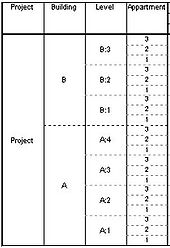
Identifying the locations of the project is a central element in the LBS method. Locations can be divided into different hierarchical levels, where the sum of the locations at a lower level corresponds to a location at a higher hierarchical level. An example is illustrated in figure 3. This hierarchical structure is called Location Breakdown Structure, and can be said to be the LBS method's counterpart to the CPM method's Work Breakdown Structure (WBS).
The degree of detail of the locality structure is independent of how detailed the activities are defined, since it is the resources of the activities (i.e. material and human resources) that govern the location breakdown. The significance of the individual activity's material and human resources for the location breakdown can be expressed in three questions that illustrate the thinking and the considerations that are made when determining the location level for the individual activity:[3]
- What is the smallest location where the activity is repeated in the project?
- What is the smallest location on which the materials resources for the current activity can be distributed?
- Which one is the largest location, where there is only room for execution of the current activity, i.e. where there are no other activities at the same time?
[edit] Coupling of activities
The activity-links, known from the CPM method (see figure 4), are expanded in LBS to include the locations of the activities. The location based activity-links enables optimization of schedules, since activities now can be scheduled to overlap. The different opportunities for optimizing using activity-links are further elaborated in section "use LBS to optimize the time schedule".
There are five different levels of location-based activity-links, which are elaborated in table 2[3].
| Activity-link | Description | Example |
|---|---|---|
| The four traditional activity links in CPM. | AS-link indicates that activity A must be completed before activity B can begin.
AA-link indicates that activity B can not be completed before activity A is completed. SS-link indicates that activity B can not be started before activity A has begun. SA-link indicates that activity B must be terminated once activity A has started. |
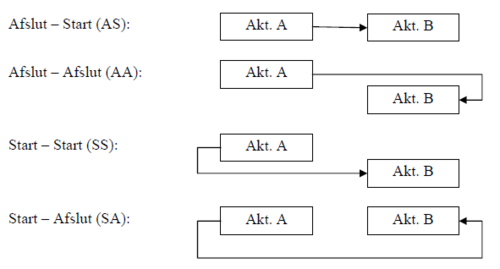 Figure 4: The four traditional activity links in CPM[3]. |
| Level 1: Activity-links between activities in the same location hierarchy. | An activity-link on level 1 links activities which are in same location hierarchy. This implies that an Activity 1 should be completed at a location A1, before the subsequent Activity 2 can begin at the same location A1. | 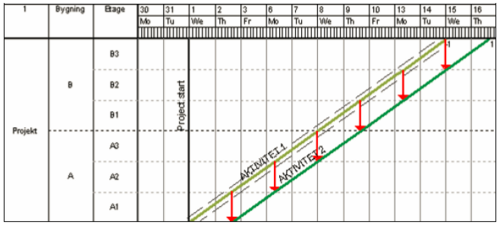 Figure 5: Example of activity-link level 1[3]. |
| Level 2: Activity-links between activities in different location hierarchies. | An activity-link on level 2 links activities which are in different location hierarchies. In the example in figure 6, an Activity 1 is assigned to location hierarchy "Building" and an Activity 2 is assigned to location hierarchy "Floor". This implies that Activity 1 should be completed in the location hierarchy "Building", before the subsequent Activity 2 can begin in the location hierarchy "Floor". | 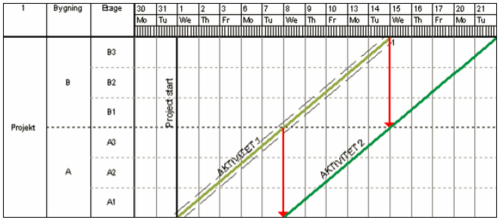 Figure 6: Example of activity-link level 2[3]. |
| Level 3: Internal activity-links. | An activity-link on level 3 determines the internal location sequence of an activity, i.e. the sequence of locations at which the activity is conducted/executed. That is, an internal activity-link is the same as the location affiliation of an activity. In the example in figure 5 Activity 1 and Activity 2 have internal activity-links that imply that the activities starts at Building A, first on floor A1, then A2 and A3, before continuing in Building B, first on floor B1, then B2 and B3. | |
| Level 4: Activity-links between two activities that creates a location slack. | An activity-link on level 4 is applied to create a location slack between two activities at different locations, i.e. a gap between the two locations. In the example in figure 7, a slack of one floor between "Vinduesmontage" and "Gulv- og vægelementmontage", implies that "Vinduesmontage" on 1st floor at the earliest can begin when "Gulv- og vægelementmontage" is completed on the 2nd floor. | 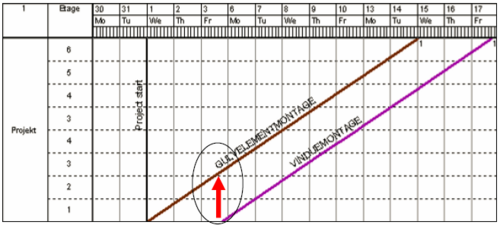 Figure 7: The four traditional activity links in CPM[3]. |
| Level 5: Activity-links between two locations. | An activity-link on Level 5 enables links between two activities at two different locations, regardless of the location level. |
The use of location based activity-links enables that the project can be planned in a way that reduces the duration of the project without increasing resource consumption. The following section will provide guidance on how to use it to reach this potential of LBS.
[edit] Application
With the application of LBS the project manager can achieve a better overview of the process, including tact time, activity sequence and locations. Therefore, the application of LBS will make it easy spotting collisions on the site and areas with inefficient use of resources. Figure 8 is an example of how the application of LBS makes it easy to spot a collision of three activities on 2nd floor in week 4, missing work on 1st, 2nd and 3rd floor in week 1 and 2, and missing work in the basement, ground floor and 1st floor in week 4 and 5[7]. In the following section it is described how to apply LBS in order to optimize the schedule.
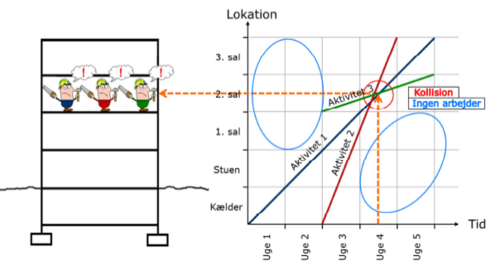
[edit] Use LBS to optimize the time schedule
There are several ways of optimizing a time schedule with the use of LBS, and in particular its location based activity-links. Table 3 provides some examples of ways of optimizing a time schedule that is scheduled with standard CPM-links[7][3].
| Way of optimizing | Description | Example |
|---|---|---|
| 1. Use the visualized flow and work spaces to avoid collisions | Figure 9 illustrates four examples of how a better overview of the activities in the time schedule illustrated in figure 8 can lead to an optimized time schedule without collisions. | 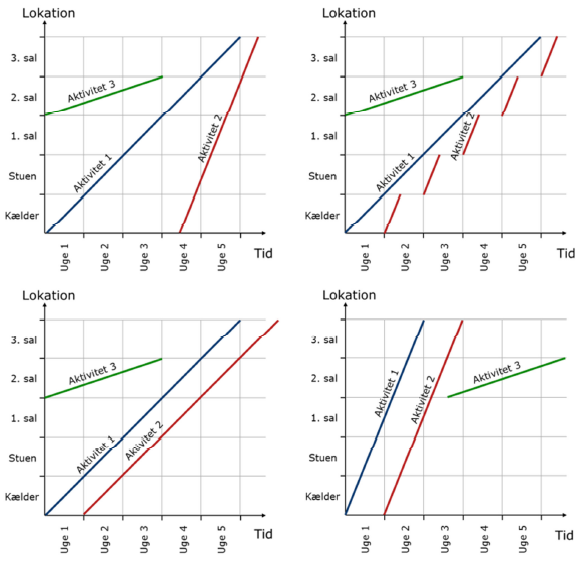 Figure 9: LBS schedule without collisions[7]. |
| 2. Add location overlap | Figure 11 illustrates the same time schedule as in figure 10, but with the use of location overlap. This implies that a subsequent activity can start before a preceding activity is completed, hence the project duration is reduced from 20 days to 14 days. | 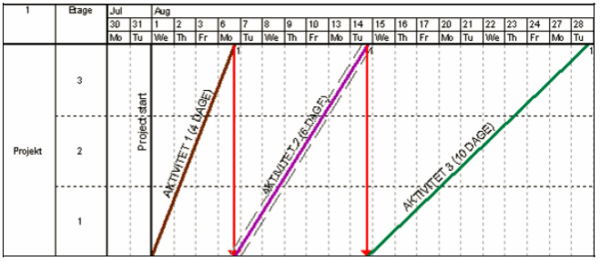 Figure 10: LBS schedule without location overlap. Duration: 20 days[3]. 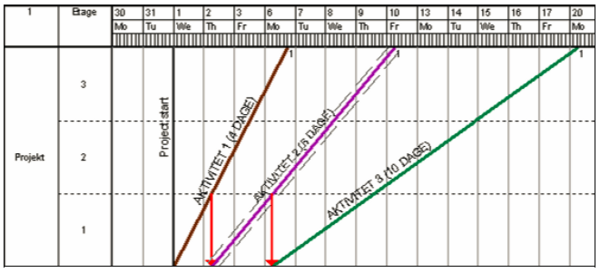 Figure 11: LBS schedule with location overlap. Duration: 14 days [3]. |
| 3. Ensure synchronization of activities | Synchronizing the activities in the project implies that the production speed of the activities is balanced against each other. In some cases it may be desirable to increase the amount of resources allocated to an activity to achieve a shorter project duration, while in another cases it may be better to reduce resource allocation in an activity. Figure 13 shows an example where the activities from figure 12 have been synchronized. Note that the total project duration of 20 days is the same in both cases. | 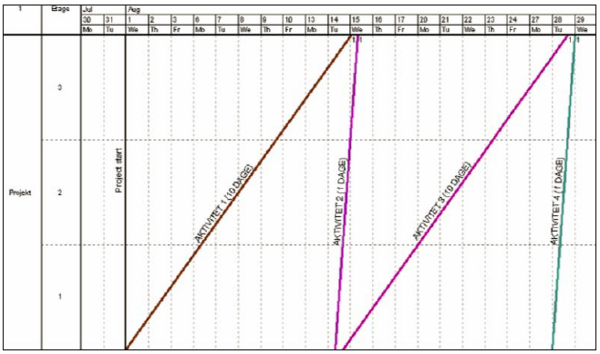 Figure 12: LBS schedule without synchronization. Duration: 20 days[3]. 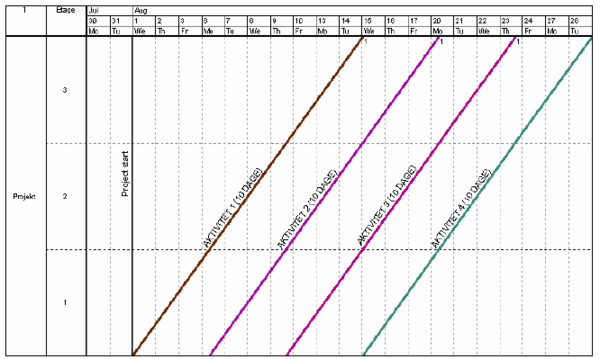 Figure 13: LBS schedule with synchronization. Duration: 20 days[3]. |
| 4. Ensure continuity of activities | It is important to ensure continuity of activities, which directly contributes to creating a steady flow of production for the individual activity. That an activity is continuous means that the entire activity is carried out in all relevant sites without interruption. Figure 14 and Figure 15 illustrate scheduling of a discontinuous and a continuous activity respectively. The examples show that it does not pay to start activity 2 as early as possible, since the total duration of the project is the same in both cases. In addition, there is a major practical disadvantage associated with the work in the discontinuous activity to be initiated and interrupted three times, which negatively impacts the productivity. | 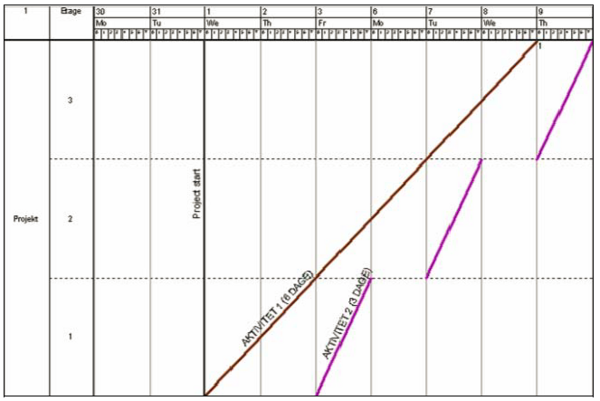 Figure 14: LBS schedule without continuity. Duration: 20 days[3]. 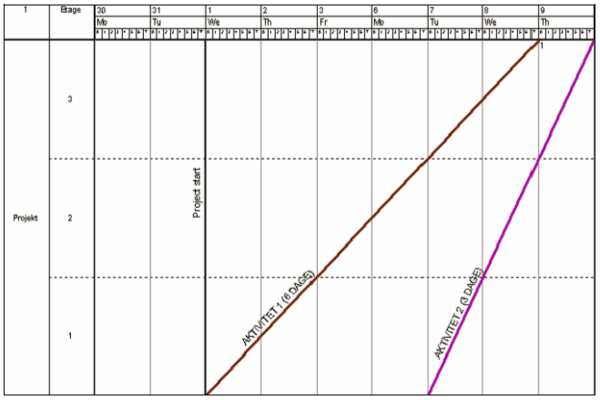 Figure 15: LBS schedule with continuity. Duration: 20 days[3]. |
| 5. Add scope zone | A scope zone (in Danish "Råderumszone") can be seen as the horizontal and vertical empty spaces between two dependent activities. It is not part of the task duration, but it is located between two activities to give time to react to deviations, and in this way function as a buffer. Scope zones are applied in order to increase the robustness of the schedule. The goal is to protect the continuous flow of an activity, instead of just protecting the critical path. Because the production rates of predecessors and successors are aligned, most tasks are on the critical path[6]. | 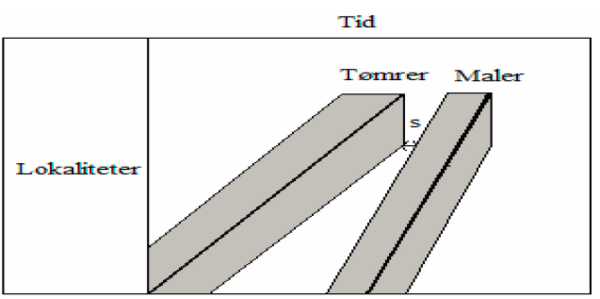 Figure 16: Scope zone between "Tømrer" (carpenter) and "Maler" (painter)[7]. |
[edit] LBS Software
The most common LBS software in Denmark is VICO (Schedule Planner). VICO is a software specifically designed to develop a location based schedule. A new project in VICO begins by making a location hierarchy, in which the project is divided into an appropriate number of levels and locations. Then VICO automatically creates a Flow line chart. Subsequently, the activities can be encoded with names and durations, and the mutual links can be scheduled. In this phase VICO has several different views of the project which make the scheduling easier. (VICO has the ability to calculate activity durations from a selection of the bill-of-quantity allocated to a specific activity together with the resources that are allocated and information on productivity for the specific type of work.) Once the activities are encoded and the mutual links have been created, an overview of the workflow of the construction project is generated. Any conflicts between activities can be solved, and human resources can be adjusted to achieve optimal workflow through the project[8].
The advantages of LBS method can be further increased when it is combined with BIM (Building Information Modelling). 4D cad software
BIM is used both to extract information needed to develop an accurate WBS and to more efficiently create schedules based on LBS.
[edit] Use LBS as a Lean Construction tool
Since 1972, LBS has been forgotten for many years, which has required a relaunch. It has to some extent been conducted by International Group for Lean Construction (IGLC), why the method is often associated with Lean construction. In relation to the ideas behind Lean Construction LBS is interesting because of its high focus on creating a flow in the process by making activities synchronized and continual. LBS supplements the Lean planning method Last Planner System (LPS), in which the level of detail of the schedule increases with the proximity to the date - a so-called rolling-wave planning[9] [10]. Refer to Last Planner System as a project management tool for further information about LPS. LBS and LPS work basically with different bias. LPS schedules with a short time horizon based on a theory that the construction process is too complex to plan with a long time horizon. Conversely, LBS works with scheduling of the entire project, even before starting. But the methods offer different benefits, and one can easily gain from both by using them supplementary. LBS does not replace the social planning and coordination that takes place between the formen in LPS, but the method can be a good tool at a more general level in which the processes are organized. At the same time LBS, with the intuitive graphical representation of the schedule, can help to highlight problems in the process to subcontractors and craftsmen in the field. Hereby, the schedule can provide a basis for a dialogue on optimization of the process or a redistribution of resources[9].
[edit] Limitations
Although LBS has a long history and is well-founded theoretically, the method in general has not had much interest in the construction industry. In addition to the results available in the form of theoretical research, there is still limited knowledge about the application of the LBS method in practice[3]. An underlying presumption is that LBS mainly is a tool for highly repetitive work (e.g. multi-storey buildings or road constructions) and, consequently, is not suitable for non-repetitive work. The theoretical work provides a solid foundation to the LBS-method, but it does not reveal whether LBS meets the demands of planning, scheduling and controlling on site and in different kinds of projects[4].
The LBS method is not hard to use, but it is difficult to handle by hand, and it is therefore necessary to have a good software program that can handle LBS. A possible explanation of the limited extent of the method may therefore be that there has been no user-friendly IT-based planning tool for the LBS method. Even though, LBS software such as Control™ and VICO has now become unsettled and has been introduced to the 2003 international market[3], it requires a significant amount of input information in the initial stage og the planning process. This is a consequence of the design of the LBS software, which uses a bill-of-quantity as the starting point for definition of activities - although it is not a specific requirement for neither LBS in general nor the specific LBS software to use bill-of-quantity. Since, project managers in a Danish context do not have access to a coherent bill-of-quantity for their respective projects, activity durations have to be valued on basis of the project managers' individual experience rather than extracted from bill-of-quantities, documented productivity data or specified numbers of resource units.
LBS implies a new, or preferably unfamiliar, scheduling method which requires a new approach to scheduling and it involves new conceptions. One aspect is about finding a sufficient level of details required for the planning, scheduling and control of the project. It is possible, but very inconvenient, to change the level of detail once the scheduling has commenced. Another difficulty is the definition of different kinds of locations, e.g. how to handle ground works in relation to the locations that are connected to the actual building. Furthermore, well-known concepts of the CPM, such as critical chain and float fail, become irrelevant as LBS principally concerns the management of workflows where resource constraints become a central aspect[4].
[edit] Should LBS be used instead of CPM?
A study executed by Haritha Mahalakshmi, K. et. al. (2017) aimed at comparing CPM and LBS by scheduling the same project using CANDY platform and VICO Schedule Planner respectively. It was found that LBS provided a project with lesser duration that the CPM schedule, as the activities in LBS were grouped location-wise and the activities could be started and advanced concurrently. Hence, there was no need to dedicate resources to different locations separately. In addition both schedules were analyzed using Analytical Hierarchical Process, in which the lesser the value of consistency the better the schedule. It was found that the consistency ratio for LBS was far lesser than the consistency ratio for CPM schedule, hence the study concluded that scheduling using LBS is more efficient than the CPM schedule[1].
If the project manager is skilled in using LBS software, it is often possible to switch between views such as Gantt chart, CPM network diagram and LBS, thus gaining the strengths of each of the methods[9].
Table 4 lists advantages and disadvantages of LBS and CPM respectively - and in the case of LBS the table is also seen as a summary of this article[10].
| LBS | CPM | |
|---|---|---|
| Good points |
|
|
| Limitations |
|
|
[edit] Annotated bibliography
Harithamahalakshmi, K. et al., 2017. Construction Scheduling Using Critical Path Method And Location Based Management System. SSRG International Journal of Civil Engineering. Available at: www.internationaljournalssrg.org
- Journal that devises an optimal technique of scheduling between CPM and Location Based Management System (LBMS).
Project Management Institute., 2013. A guide to the project management body of knowledge (PMBOK® guide). 5th ed., Available at: http://proquestcombo.safaribooksonline.com.proxy.findit.dtu.dk/book/software-engineering-and-development/project-management/9781935589679/firstchapter
- The PMBOK® Guide is the preeminent global standard for project management. It provides project managers with the guidelines, rules and characteristics needed to achieve organizational excellence.
Andersson, N. & Christensen, K., Practical Implications Of Location-Based Scheduling. Department of Civil Engineering, Technical University of Denmark, DK-2800, Kgs. Lyngby, Denmark. Available at: http://cdn2.hubspot.net/hub/658/whitepapers/practical_implications_of_location-based_scheduling.pdf [Accessed February 12, 2018]
- This study rests upon three case studies, in which the purpose is to test and evaluate the practical implications of LBS when applied on site. The study concludes that improved schedule overview, establishment of workflows and improved project control constitute the three most important implications of LBS.
Andersson, N. & Christensen, K., 2007. Location-based Scheduling. Vurdering af LBS-metodens anvendelse i byggeprojekter
- This report deals with Location-based Scheduling. The report is the result of a cooperation project between BYG * DTU and the construction companies Pihl & Søn, MT Højgaard and NCC. The report is based on current literature in the field, but it is also rooted in empirical studies that have been completed in three parallel graduation projects.
Kenley, R. & Seppänen, O., 2010. Location-Based Management for Construction: Planning, Scheduling and Control 1st ed., London and New York: Spon Press.
- With extensive case studies for illustration, this is a practitioner's guide to an entirely new production system for construction management using flowline scheduling. Covering the entire process of presenting a comprehensive management system – from design, through measurement, scheduling, and visualization and control – its emphasis is on reducing cost and increasing quality. Drawing its components together into a management system, the authors not only include theory and explanations of how and why it works, but also examine and present a suite of methods for successful project implementation.
Seppänen, O., 2009. Empirical research on the success of production control in building construction projects. Helsinki University of Tehnology.
- The main goal of this thesis is to examine empirically how production is currently controlled and to establish the root causes for failure to implement schedules as they are planned. The second goal of the research is to improve the location-based management system and its processes. The research contributed an improved forecast and alarm system and proposed a systematic process for their use in construction.
[edit] References
- ↑ 1.0 1.1 1.2 Harithamahalakshmi, K. et al., 2017. Construction Scheduling Using Critical Path Method And Location Based Management System. SSRG International Journal of Civil Engineering. Available at: www.internationaljournalssrg.org [Accessed February 8, 2018].
- ↑ Project Management Institute., 2013. A guide to the project management body of knowledge (PMBOK® guide). 5th ed., Available at: http://proquestcombo.safaribooksonline.com.proxy.findit.dtu.dk/book/software-engineering-and-development/project-management/9781935589679/firstchapter [Accessed February 8, 2018]
- ↑ 3.00 3.01 3.02 3.03 3.04 3.05 3.06 3.07 3.08 3.09 3.10 3.11 3.12 3.13 3.14 3.15 3.16 3.17 3.18 3.19 3.20 Andersson, N. & Christensen, K., 2007. Location-based Scheduling. Vurdering af LBS-metodens anvendelse i byggeprojekter
- ↑ 4.0 4.1 4.2 4.3 4.4 Andersson, N. & Christensen, K., Practical Implications Of Location-Based Scheduling. Department of Civil Engineering, Technical University of Denmark, DK-2800, Kgs. Lyngby, Denmark. Available at: http://cdn2.hubspot.net/hub/658/whitepapers/practical_implications_of_location-based_scheduling.pdf [Accessed February 12, 2018].
- ↑ Kenley, R. & Seppänen, O., 2010. Location-Based Management for Construction: Planning, Scheduling and Control 1st ed., London and New York: Spon Press.
- ↑ 6.0 6.1 Seppänen, O., 2009. Empirical research on the success of production control in building construction projects. Helsinki University of Tehnology.
- ↑ 7.0 7.1 7.2 7.3 7.4 7.5 7.6 MT Højgaard A/S, 2015. Hvad er lokationsbaseret planlægning ?
- ↑ Christensen, C.J. et al., 2015. Lokationsbaseret Planlægning til Optimering af Tidsplaner. Technical University of Denmark, DK-2800, Kgs. Lyngby, DenmarK.
- ↑ 9.0 9.1 9.2 Bertelsen, S., 2012. Håndbog i Trimmet Byggeri - Lean Construction 3rd ed., Foreningen Lean Construction-DK og Sven Bertelsen. Available at: http://www.leanconstruction.dk/media/8947/H%C3%A5ndbog%20v%202.1.pdf
- ↑ 10.0 10.1 Maylor, H., 2010. Project Management 4th ed., Harlow: Prentice Hall.
